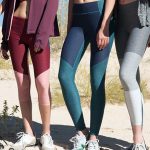The U.S. and China announced a comprehensive, three-year agreement on the import of textiles and apparel. The quotas established under the agreement are similar to quotas that would have been imposed if China textile safeguards were invoked but quotas on man-made fiber jackets are not included in the agreement at all.
According to SIA, it is unlikely that new restrictions will be placed on ski jackets from 2006 to 2008, since the U.S.-China agreement calls on the U.S. to exercise “restraint” before imposing any restrictions on jackets and other products not already restricted by the agreement. However, there is no firm commitment to continue the carve-out.
While these two key categories are preserved for the outdoor and snowsports industry, In 2006, the new trade agreement actually imposes tighter limits on Chinese exports of “core” apparel products than any quotas that could have been imposed under the WTOs rules in 2006. In general, quotas established by the agreement for 2006 on “core” products are stricter than the safeguard threshold, about the same as the safeguard threshold for 2007, and higher than the safeguard threshold for 2008.
OIA and SIA were able to protect both industries from potentially damaging quotas. SIAs effort with their D.C. law firm, DLA Piper began the process four months ago. Shortly thereafter, OIA began to address the issue and hired Travis, Sandler, & Rosenberg to represent the outdoor industrys interests on Capital Hill.
By all accounts the message coming from both markets was effective in ensuring a steady supply chain for Chinese manufactured outerwear to retailers.
>>> Had these quotas been put in place, the vast majority of all soft shells and waterproof breathable outerwear may not have made it to market next year…















